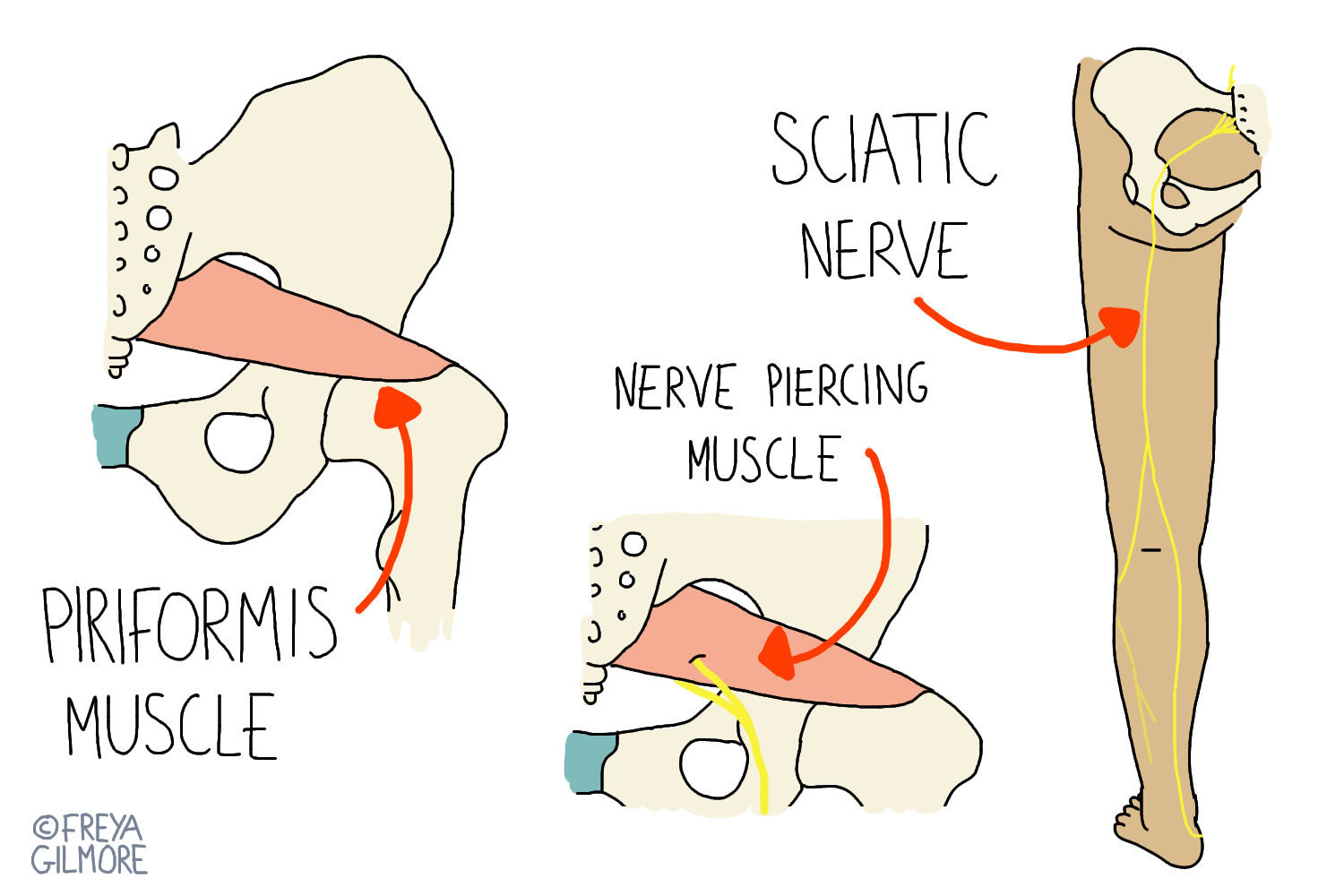Piriformis Syndrome
Although all cases of sciatica are caused by irritation of the sciatic nerve, not all cases come from the back.
The piriformis muscle is a small muscle that sits deep in the buttock. Everyone’s anatomy is slightly different, and for some people the sciatic nerve actually pierces the muscle itself. For other people, the nerve just runs nearby. In either case, when the muscle is tight, it can irritate the nerve. This causes the usual symptoms of sciatica, and is known as Piriformis Syndrome.
Causes of Piriformis Syndrome
Like any other muscle, piriformis can become tight when we ask it to do more than it is used to. Things like picking up a new sport or going for longer runs than normal could do this. Spotting the symptoms in the early stages might mean that you can adapt your exercise. This might be as simple as adding in a better warm up or stretching routine.
Piriformis Syndrome is also associated with pregnancy. General water retention can make nerves more susceptible to irritation- we see more Carpal Tunnel Syndrome in pregnancy too. We also expect the buttock muscles to be working harder as pregnancy progresses. There are two reasons for this:
The ligaments of the pelvis become more lax, so the muscles work harder to improve stability
As the centre of gravity changes, muscles of the back, buttock, and hamstrings need to work harder to keep you upright
Neither of these points are things we can change, but we can help relax the muscles involved. It may also be appropriate to think about strengthening exercises or changing your posture to a more energy-efficient one. We can help with these.
Piriformis Muscle
The main job of piriformis is to outwardly rotate the hip. This means that when it is tight, it will try to hold the hip in that turned-out position. In order to stretch it, we need to do the opposite, so your osteopath may recommend exercises to help. You might also expect your treatment sessions to involve direct work onto the muscle itself.
Sciatic Nerve
Irritated nerves are not always the most straight forward things to manage. When a nerve sends a pain signal to the brain to alert it to danger, the brain might order nearby muscles to tighten up in an attempt to protect the area. Unfortunately, for cases like this, that will only make it worse.
Breaking the Cycle
With this in mind, your osteopath will work to release the muscle and calm down the nerve at the same time. Once the cause of the tightening is determined, it’s usually quite simple to relax off the muscle. The nerve might be more complicated, especially if symptoms have been going on long enough to make the nerve excessively reactive. A combination of hands on treatment and exercises for you to do at home will likely be enough to get back on top of your symptoms.
You can make an appointment online to start addressing your piriformis syndrome.

